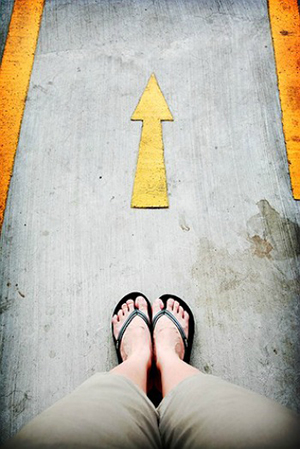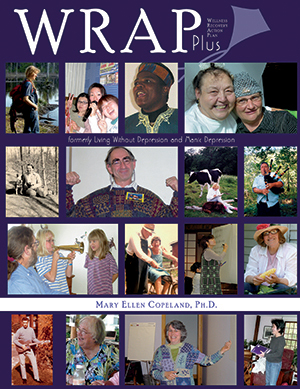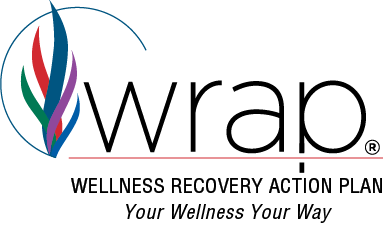 In 1997 when people with lived experience worked together to develop WRAP, we had an earnest discussion of identifying and responding to triggers. It was decided by the group that we shouldn’t spend a lot of time “catastrophizing”, thinking of all of the bad things that might happen. It was agreed that it would be easy to get carried away with identifying “huge” triggers, and that it was not likely we would identify the things that would actually happen in our lives. I could never have predicted what would happen in my life after that day. Much of it has been wonderful. And some of it has been so difficult, and even tragic, so tragic that some days I don’t know how I can go forward for one more day, how I can take one more step.
In 1997 when people with lived experience worked together to develop WRAP, we had an earnest discussion of identifying and responding to triggers. It was decided by the group that we shouldn’t spend a lot of time “catastrophizing”, thinking of all of the bad things that might happen. It was agreed that it would be easy to get carried away with identifying “huge” triggers, and that it was not likely we would identify the things that would actually happen in our lives. I could never have predicted what would happen in my life after that day. Much of it has been wonderful. And some of it has been so difficult, and even tragic, so tragic that some days I don’t know how I can go forward for one more day, how I can take one more step.
When we discussed this issue in the group, we talked about using the Wellness Tools that we have in our Triggers Action Plan more intensively and consistently in these times–using whichever tools were available and felt right to us. It was a good call. None of this is easy but this is the best we could figure out.
In the old days, when things got really hard for me and I just felt like I couldn’t go on or “hold it together”, I would end up in the hospital for a few days or weeks, be at home “hiding out”, or get my cocktail of medications boosted up or changed. I know this continues to happen for other people a lot. I know hospital emergency rooms and mental health centers are, even now, overflowing with people for whom things have gotten “really hard”.
Now many years later and with lots more experience, I would say the idea of using Wellness Tools intensively, even around the clock, helps a lot. Nothing can completely take away the pain of these hard, hard times, but using the Wellness Tools that work for us really helps. Some of the ones that I use are working on a quilt, going for a long walk and talking to a supporter. There are a couple of Wellness Tools that are not so common, one that is even new to me, that I now really use a lot.
The first one is being with my discomfort. It is huge. I can be really, really uncomfortable and still be OK. I do it by acknowledging to myself how hard things are, tell others if there are people around I can share it with, and then just being with it. It is hard, hard, hard. Horrific. But I can do it for myself and others when I have to. I don’t need to get hospital care or even use medications. I need to be with it.
The second is something that is a customary expression of deep grief in Ireland, Scotland and other cultures. It is called Keening and it is a form of vocal lament associated with sadness and mourning. I am hearing from people that this kind of verbal expression of sound, whatever it might be, crying, wailing, sobbing and even shouting (as long as it is not directed at another person and people understand and accept what is happening) feels like the right thing to do and helps them move through what they are experiencing. It might even include some movement. Perhaps a long, hard, fast run if you are in shape for it or a hard ride on a stationary bicycle. In your list of Wellness Tools, you can call it keening or whatever you want to call it–as long as you know what it means when you need it. You can do this alone or in the company of an understanding person. The need to do this seems to end on its own and each person seems to know when they are done “keening”.
The third is talking and talking and talking about what has happened or what I am experiencing with a peer supporter who knows and practices the Principles and Tasks of Intentional Peer Support. I am working with Shery Mead on a revision of the book WRAP and Peer Support that we wrote in 2004 (Copeland, M., Mead, S. 2004. Dummerston, VT: Peach Press.) so I have been thinking about this and working on how best to share it with all of you. I will let you know as soon as it is ready for publication. In the meantime, talk and talk and talk, and listen, listen, listen.
If you have ideas on getting through the hardest times, please let me know so I can share them with others. Join the conversation on Facebook.


Mary Ellen Copeland, PhD, developed Wellness Recovery Action Plan (WRAP) with a group of people with lived experience who were attending a mental health recovery workshop in 1997. She is the original author of the WRAP Red Book, as well as dozens of other WRAP books and materials. She has dedicated the last 30 years of her life to learning from people who have mental health issues; discovering the simple, safe, non-invasive ways they get well, stay well, and move forward in their lives; and then sharing what she has learned with others through keynote addresses, trainings, and the development of books, curriculums, and other resources. Now that she is retired, and that, as she intended, others are continuing to share what she has learned, she continues to learn from those who have mental health issues and those who support them. She is a frequent contributor to this site.





